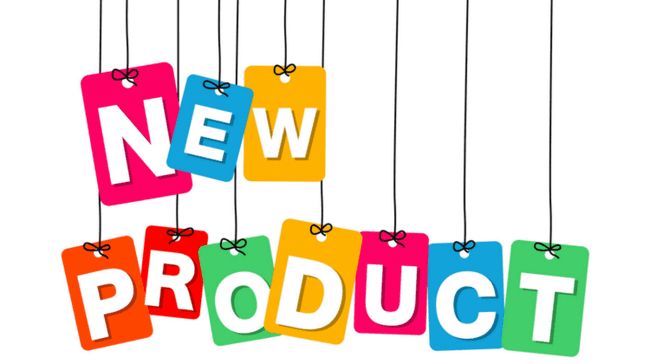In today’s growing economy, accompanied by increasing consumer spending, demands have become more diverse and stringent. Many businesses have recognized these requirements and are developing new products to meet these needs. However, many businesses let the market entirely determine their success without investing in thorough measurement of their campaigns, which can lead to failures despite initial success. Therefore, this article will provide some insights and precautions to consider in launching a new product.

New product development helps meet more market needs
One of the common strategies for expanding a business’s market and scale is to launch new products. However, research and reports have shown that the failure rate of new products when introduced to the market is about 95%. This statistic is based on surveys of over 30,000 new products introduced annually. This high failure rate can be a significant psychological barrier for businesses that intend to enter various market segments or diversify their product offerings.
Nevertheless, if businesses were deterred solely by the failure rate, the world would not have innovations like smartphones, electric cars, or self-driving vehicles. Therefore, it’s not just about revenue or growth, but also about ideals that serve humanity, increase efficiency, and reduce burdens. These ideals motivate businesses to invest in their research and development (R&D) activities.
With a 95% failure rate – a remarkably high number – it prompts us to ask why the failure rate is so high. Generally, there are three main reasons:
The market demand for goods and services is vast, but determining how businesses can profit from those demands can be vague and uncertain. Verification often requires extensive research efforts to produce reliable results, and the time it takes to produce these results may lead to missed opportunities for businesses. Additionally, business methods of obtaining information may become outdated and ineffective in the current era, causing the research process to involve unnecessary steps and a lack of suitable and modern campaign measurement tools.
Furthermore, business market researchers may have misdefined targets and research directions, leading to decisions by senior leadership becoming uncertain. Neglecting research leads to impulsive and hasty development of new products based on unreliable results.
Quality, from the customer’s perspective, is the actual experiences they have—whether the product or service delivers as promised or as they expected based on information provided. Customers typically seek a solution when they come to a particular product or service, and businesses might influence customers by providing information about features that do not truly exist or are exaggerated. This may cause customers to feel deceived when using the product and share their disappointment with others, resulting in a significant drop in sales for the new product.\

False marketing deviates customer expectations from actual experiences and causes disappointment
Next, the sales process doesn’t end with customers making payments and receiving their products or services; it also includes activities that happen afterward. During usage, customers need guidance on warranty, repair, replacement, or service care in case issues arise. This is entirely normal, and the likelihood of such occurrences is relatively high, especially for new products or services that may need further development.
However, the key issue here is how businesses react to these situations. Refusing or providing low-quality support services can lead to a loss of customer trust in the brand’s future products. Additionally, customer relationships with the business can become shaky, making it easier for competitors to capture market share.
As previously analyzed, one of the reasons for high failure rates is that businesses often fail to understand the market’s real needs and don’t invest enough in research. Therefore, managers, when determining the direction of a new product, need to have a deep understanding of how their product will address current needs, emerging needs, or create new market demands. Measuring campaigns at this stage involves gathering statistical data on economic conditions and using SWOT analysis.
A specific example of this is the first iPhone that Steve Jobs introduced to the world. While there was already a need for phones for communication at that time, the emerging need was the elimination of physical keyboards and expanding the screen. Understanding users’ needs contributed to the ongoing popularity of the iPhone today.

Understanding competitors helps businesses avoid the mistakes
Additionally, before launching a new product campaign, it’s crucial to compare with competitors. Information from competitors will help businesses avoid past mistakes and understand their capabilities. With this information, businesses can develop products with distinctive value propositions that competitors cannot easily replicate, gaining a competitive edge in the market.
The implementation phase is crucial as it demonstrates a business’s production capability and supply chain management. With good production capabilities, businesses can minimize reliance on external supplies and maintain better control over new features or technologies than their competitors. Measuring campaigns at this stage should focus not only on markets but also on internal factors within the organization, such as work performance, costs, energy consumption, and transportation times. Additionally, the distribution system plays a significant role since the new product needs high visibility to maximize sales.
Finally, the sales phase is when businesses need to monitor specific key performance indicators (KPIs) closely. New products will have customers experiencing them for the first time, and they will provide feedback on features, design, color, material quality, and adherence to descriptions. Businesses should see this as significant contributions to perfecting the product and strive to collect as much feedback as possible. Typically, customers will evaluate their service experience during the buying process or afterward on social media platforms. Businesses should prioritize receiving constructive feedback and implementing it in future production plans to meet market demands.

Post-purchase reviews will help businesses understand the market more deeply
Additionally, businesses should measure the number of reports related to the new product or service, the number of resolved issues, and comments on media outlets. These pieces of information will provide deeper insights into customer perceptions and serve as a basis for long-term campaign planning rather than just the lifespan of the current product.
The content above has presented reasons and considerations for businesses in developing new products to increase their scale or market share. Managers and marketers should invest more in measuring campaign activities to achieve substantial revenue results. Hopefully, this article will be helpful for upcoming development plans for businesses!

